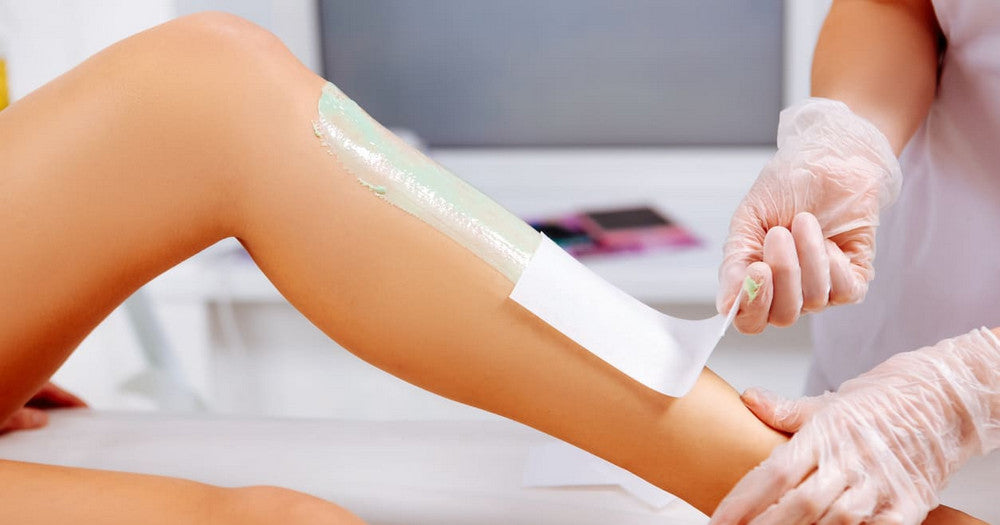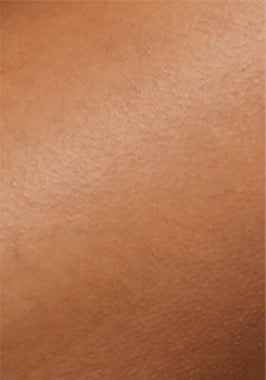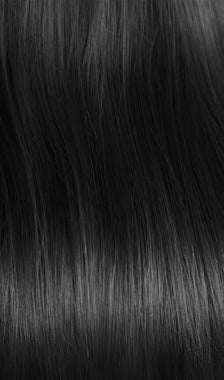Since laser hair removal came into existence, we have all considered having it done. It is an effective method to reduce the number of hairs and achieve silky smooth skin.
The heat generated by the laser destroys the hair follicles and prevents or delays future hair growth. This sounds tempting when you think you will have a hairless body forever, right? Unfortunately, laser hair removal is not permanent. After the treatment, the hair will be thinner and less, but it still needs to be removed.
Most of us choose waxing because it is the traditional method that we have all been using for a long time. Have you ever thought about whether waxing is the right method after or between your laser hair removal treatments ? Let's get to the bottom of it together and find the right answer.
What happens to your skin after laser hair removal?
Laser hair removal uses heat to destroy hair follicles by penetrating the skin. For all the benefits it offers, there are also some side effects that can be temporary or permanent.

After laser hair removal, some reactions occur in your body due to the heat generated by the laser:
- Skin irritation: When the heat from a laser hair removal device reaches the hair follicles, it can cause a stinging sensation that makes you itch for some time.
- Tenderness: The reaction to the laser may make your skin red and tender. But don't worry, this won't last long.
- Swelling and blistering: Laser hair removal can destroy the top layer of skin, causing fluid to accumulate there, leading to inflammation and swelling in the treated area.
- Skin sensitivity: Since your skin is constantly exposed to heat, it becomes sensitive, especially in darker skinned people. For this reason, it is recommended not to sunbathe after hair removal.
If you would like to learn more about these side effects and their causes, please click on Side Effects and Risks of Laser Hair Removal, You Should Know.
Can I wax after laser hair removal? (and why)
After reading about the side effects of laser hair removal, what do you think about the safety of waxing after laser hair removal? Yes, you are right. It is not safe to wax the skin after laser hair removal.

If your skin has already gone through all these reactions and is red and sensitive, waxing can disturb the skin even more and make the side effects of laser hair removal even worse. Wondering if all these side effects are temporary and if you can go ahead with your waxing once they are gone? We have another reason why you shouldn't wax after laser hair removal.
Waxing after lasering will make the treatment ineffective. Waxing any part of your body will pull out the hair at the root and stimulate the roots to produce more follicles so new hair can grow back better. The result is that instead of thinning and less hair, you will get the same thick and more hair you had before. Nobody wants to waste their money like that, so it's best to avoid waxing.
Can I grow hair between laser hair removal sessions?
Just like you can't use wax after laser hair removal, it's best not to use wax between laser hair removal sessions either. Laser hair removal requires a few sessions and each session is spaced 4 to 6 weeks apart.
It seems a bit hectic, but since your hair grows in a cycle, these sessions are designed to ensure that the hair follicles are addressed in their new growth phase. To get back to the point: for laser hair removal to work effectively, your hair and hair follicles should be intact.
When you wax and remove your hair completely, your body has no way to absorb the heat generated by the laser energy. This means that no matter how long your sessions are, they will only cause burns and not hair removal. It is best to stop waxing a month before you start your laser hair removal sessions.
How long can I let my hair grow again after laser hair removal?
In any case, it is best not to wax body hair after laser hair removal or between hair removal sessions. However, there are some variations.
Some studies prohibit waxing completely, while others suggest that you can wax three weeks after completing your laser hair removal sessions. To be sure, we recommend that you seek advice from the place where you are having your treatment, as only the professionals know best what is best for their client. So don't hesitate to ask your questions to your clinic to avoid any problems.
What other methods should I avoid after laser hair removal?
You can't just go ahead and try any hair removal method after you're done with the laser hair removal session. Aside from waxing, there are a few other methods that should be avoided. Let's discuss why.
1. Sugaring
Just like waxing, sugaring can slightly damage the outer layer of skin, making it more sensitive and affecting the after-effects of laser hair removal. It also removes the hair, meaning the laser treatment will be ineffective, whether you do it between or after your hair removal.
2. Hair removal with thread

When new hairs start to grow after a long period of hairless, smooth skin, you might think that threading might be the right option for those thin, small hairs. Similar to other traditional hair removal methods, threading removes hair at the root. No hair in the follicles means no heat is absorbed, and you're just wasting your money on these expensive treatments.
3. Plucking hair
Plucking is another method that seems simple and efficient to remove unwanted hair. Plucking involves losing hair down to the root. The laser mainly targets the roots and weakens them by cutting off their blood supply. Since plucking removes the hair roots, laser hair removal is unnecessary.
4. Depilatory creams
Depilatory creams do not remove hair at the root, which means they can be effective for hair removal during laser hair removal sessions. But these depilatory creams can cause reactions on the skin as the skin is more vulnerable to damage after laser hair removal.

Therefore, it is best to avoid depilatory creams, especially if you are already suffering from the side effects of laser hair removal.
Is there an alternative method I can use after laser hair removal?
After reading all the methods above, you might be wondering if there is another method that can help you remove your hair. Well, there is, and it is safe too.
This is shaving. When you shave, the hair is not completely removed from the root. With laser treatment, the laser can target the hair roots and work efficiently.
If you shave after the treatment, you can prevent further hair growth because the hair roots are not affected.
Can I shave immediately after laser hair removal?
While shaving is safe, there are also some guidelines depending on whether you want to do it between your sessions or after all sessions are complete. It is best to shave at least 3-4 days after treatment. This is because the skin needs time to heal and shaving immediately can irritate the skin and increase the burning sensation caused by the laser.
If you want to shave between treatments, you should shave 24-48 hours before the treatment, or you can follow the clinic's recommendations.
Conclusion
Laser hair removal has made our lives easier as it greatly reduces the amount of body hair and saves us from the hassle of waxing or plucking hair. It is an efficient method but does not provide permanent results so you will have to remove your hair then and now.
The new hairs are fewer and thinner, so hair removal is required less frequently, but one cannot use just any method. Waxing, plucking and threading can remove the hair at the root. This will result in more hair growth, and the treatment sessions will have been in vain. In such cases, it is best to shave the unwanted hair because shaving does not remove the hair from the root, so the laser can easily target the roots and produce results.
In addition to shaving, you can also use the skin care routine before and after hair removal to achieve even better results.




























